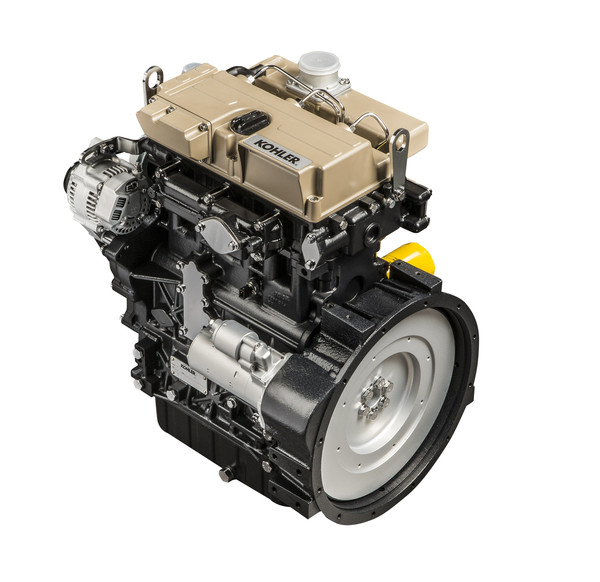
Reduced size and power consumption for Kohler KDI engines
In view of the entry into force of the upcoming emission standards (TIER 4 final, above 19kW in the US; Stage IIIB, above 37kW in the EU) Kohler presents its new range of diesel engines, Kohler Direct Injection (with engine capacities of 1.9, 2.5 and 3.4 litres), featuring constructive solutions that ensure a high tech clean combustion with low emissions without resorting to after-treatment devices. And, above all, without sacrificing the "top of the class" performance that has always characterized Kohler engines. The great strength of the KDI is the high pressure (2000 bar) common rail injection system, which is supported by the electronically controlled EGR valve and the distribution by four valves per cylinder, provides the right amount of flue gas recirculation (liquid cooled by a water/air exchanger), rendering unnecessary any after-treatment devices. The cooling of the recirculated gases, and the consequent reduction of the NOx values, is made possible by the positioning of the EGR valve on the hot side, and by the particular path that the air circulation follows through the two cooling stages, while the geometry of the suction manifold gives uniformity to the air mixing in each cylinder, evenly distributing the NOx reduction obtained by the previous stage. For the users and for the OEMs (which can replace existing engines with smaller sizes), the benefits of the innovations introduced by the German brand translate into a reduction in size - KDI is a compact engine with strong performance (power up to 23kW/l, and torque up to 120 Nm/l) - and a significant reduction in fuel and oil consumption (for the absence of the regeneration process). That's not all, because the particular polishing of the cylinder, which reduces friction, brings the service intervals to 500 hours, with a gain of up to 350 hours compared to the engines not in compliance with Tier IV final and equipped with DPF filters.








